There are lots of baffling things about the US – guns, writing the date the wrong way round, and the continued use of imperial measurements.
But one of the most confounding – and consequential – is how Donald Trump became president in 2016 despite losing the popular vote by a margin of nearly three million.
It’s all down to the way in which the US elects its leader which centres on something called the Electoral College, and if you want to fully understand what’s happening in the 2020 election, then this is the article for you.
What is the Electoral College?
Let’s start with one very important fact that often gets overlooked – the US president is not elected directly by citizens.
“The way to think about it is it’s the states that elect the president,” Christopher Anderson, professor of politics and policy at the London School of Economics, tells HuffPost UK.
“Really what we’re talking about is 50 separate elections, it’s not just one national election.”
This might sound odd seeing as on election day millions of US citizens make their way to voting booths and cast their ballot for who they want to be president, but what they’re actually voting for is something called an elector.
There are 538 electors divvied up among all the US states and together they form the Electoral College. It is this small group of people that carries out the will of the public and actually votes for the president.
And in a further twist you may not be aware of, this doesn’t actually happen until December, and there’s very little to stop these electors going rogue and ignoring the public vote.
This sounds like madness and that’s because it is, yet somehow the system – more or less – works.
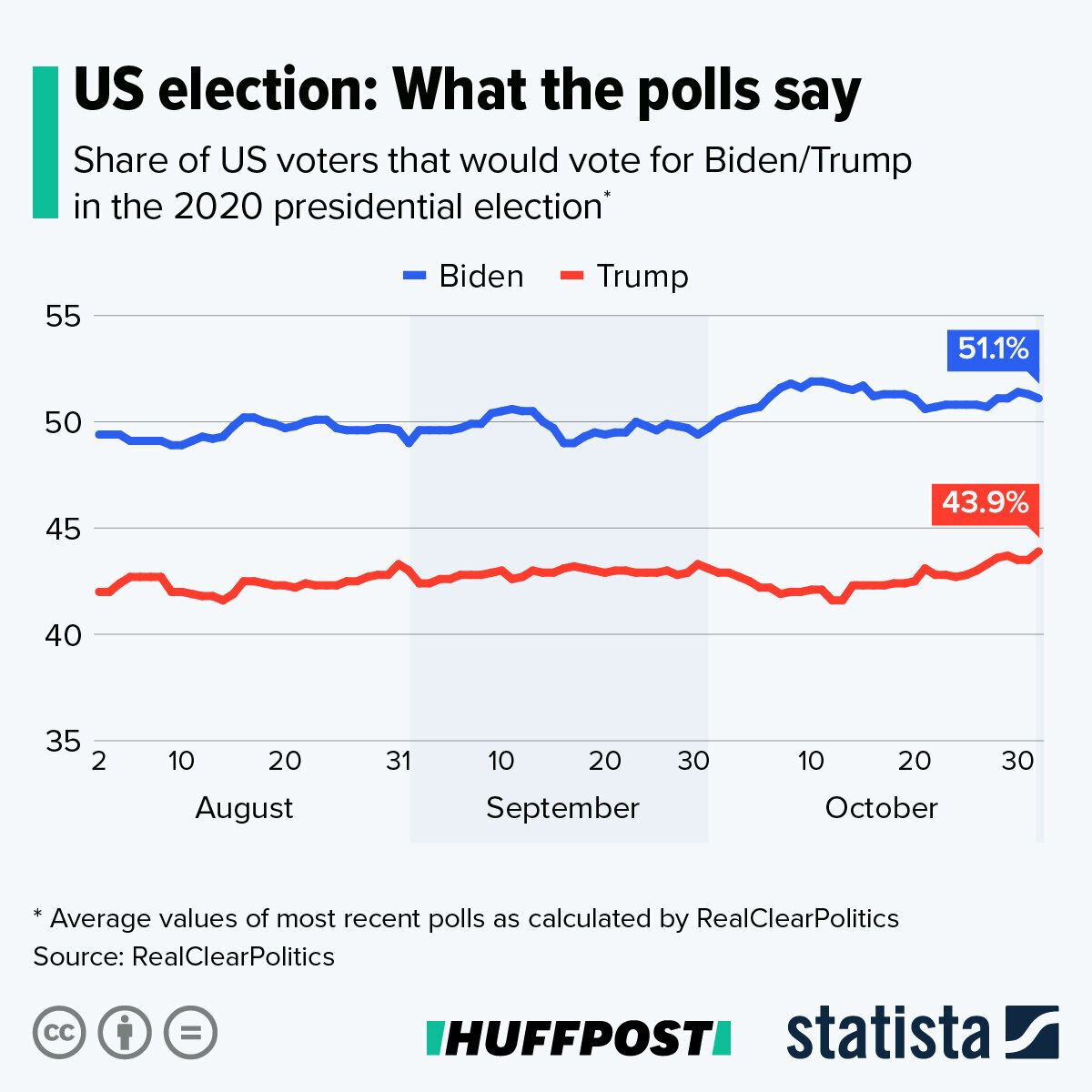
Why does America use this system?
It’s all about history of course. Oh, and a historical disdain for the average person on the street.
The first few years after the founding of the United States in 1776 were marked with much discussion of how to fairly elect a president in a country composed of independent states.
This was made even harder before the days of mass communication as a potential candidate would find it hard to get their message heard by all people across the country as would be required for a fair and informed popular vote.
“The original idea was the people couldn’t be trusted necessarily to make the right choice,” says Prof Anderson. “And they wanted to find a way of giving each state a voice in selecting the president.”
The Founding Fathers instead envisaged a system of nominated electors who would be voted for by the public in each state.
These electors could then dedicate time to learning about the candidates and their policies and were then entrusted by the public to vote for the right one on their behalf.
Or, as eloquently and more than a little patronisingly put by Founding Father Alexander Hamilton:
“A small number of persons, selected by their fellow-citizens from the general mass, will be most likely to possess the information and discernment requisite to such complicated [tasks].”
And thus the Electoral College was born.
How has the Electoral College changed?
In lots of ways but the most important is that the general population of the US is now considered informed enough to responsibly elect a suitable president (😬) without the need for electors to do it on their behalf.
In modern elections, the popular vote at a state level is still technically a vote for the electors, but these electors are expected to convey the will of that vote.
The total number of electors is equal to the number of representatives there are in the US Congress which is 535, 435 seats House of Representatives and 100 in the Senate.
The extra three electors are assigned to Washington DC as it’s where the president will live so is deemed quite important.
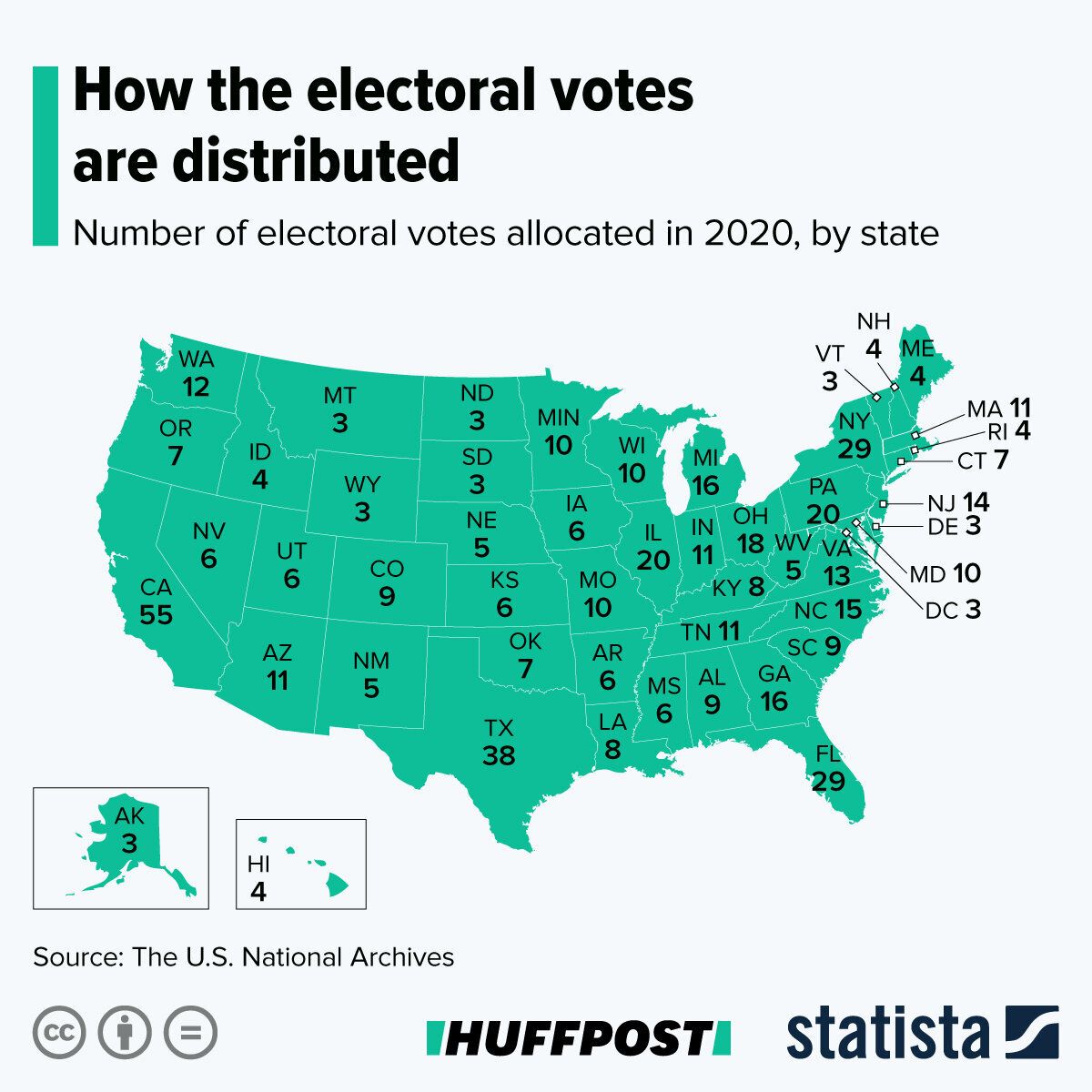
Electors vote on behalf of the citizens in that state in a “winner takes all” system. Arizona for example has 11 electors. If a majority of citizens vote for Joe Biden, then he will win all 11 electoral votes.
This repeats for each state until one candidate has an absolute majority of electoral votes (270+).
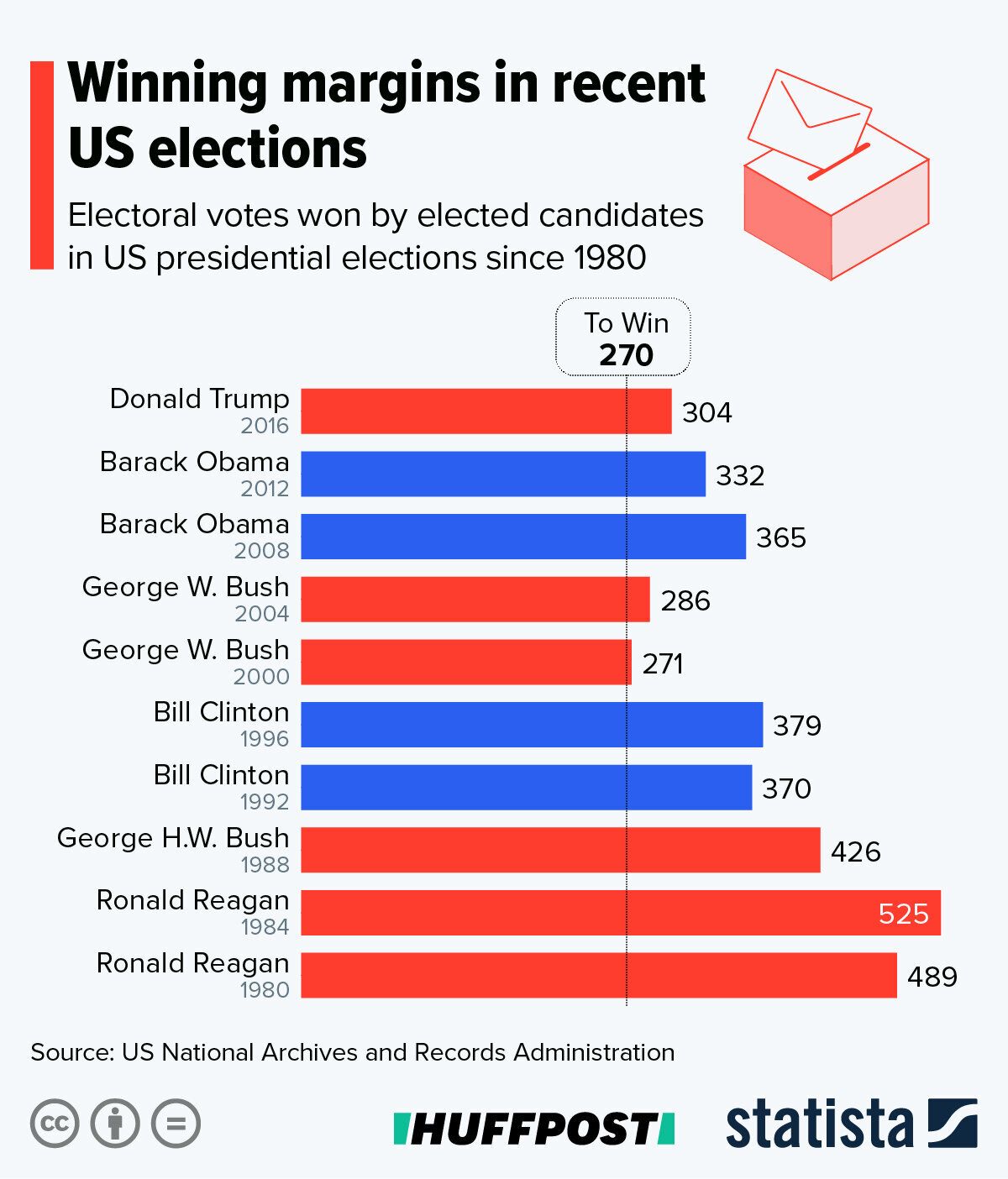
Is the Electoral College democratic?
In the truest sense of the word, no. If 51% of people in Arizona voted for Biden and 49% voted for Trump, then the votes of 49% of people are effectively erased.
It’s this winner takes all approach that means presidential elections always come down to a few key battleground states which can go either way by a matter of just hundreds of votes, yet the loser gets nothing.
This year, the election will be decided by about a dozen states – Florida, Georgia, New Hampshire, North Carolina, Ohio, Michigan, Pennsylvania, Texas, Wisconsin, Minnesota, Arizona, Nevada and Iowa.
There’s also the issue of how many electors each state is allocated which is loosely based on the number of people who live there but there is huge variation.
On average, a state is awarded one electoral vote for every 565,166 people but each state has a minimum of three electoral votes.
This means the least populous states are over-represented while the most populous are under-represented.
Wyoming for example has one electoral college vote for every 193,000 people, while California has one per 718,000 people.
Is the system fair?
“It depends on how you define representation,” says Prof Anderson. “If representation is about the popular vote and the majority should win, then it has the real potential to be undemocratic.”
“In the last 20 years we’ve seen two occasions, in 2000 and 2016, when the popular vote winner didn’t become president.”
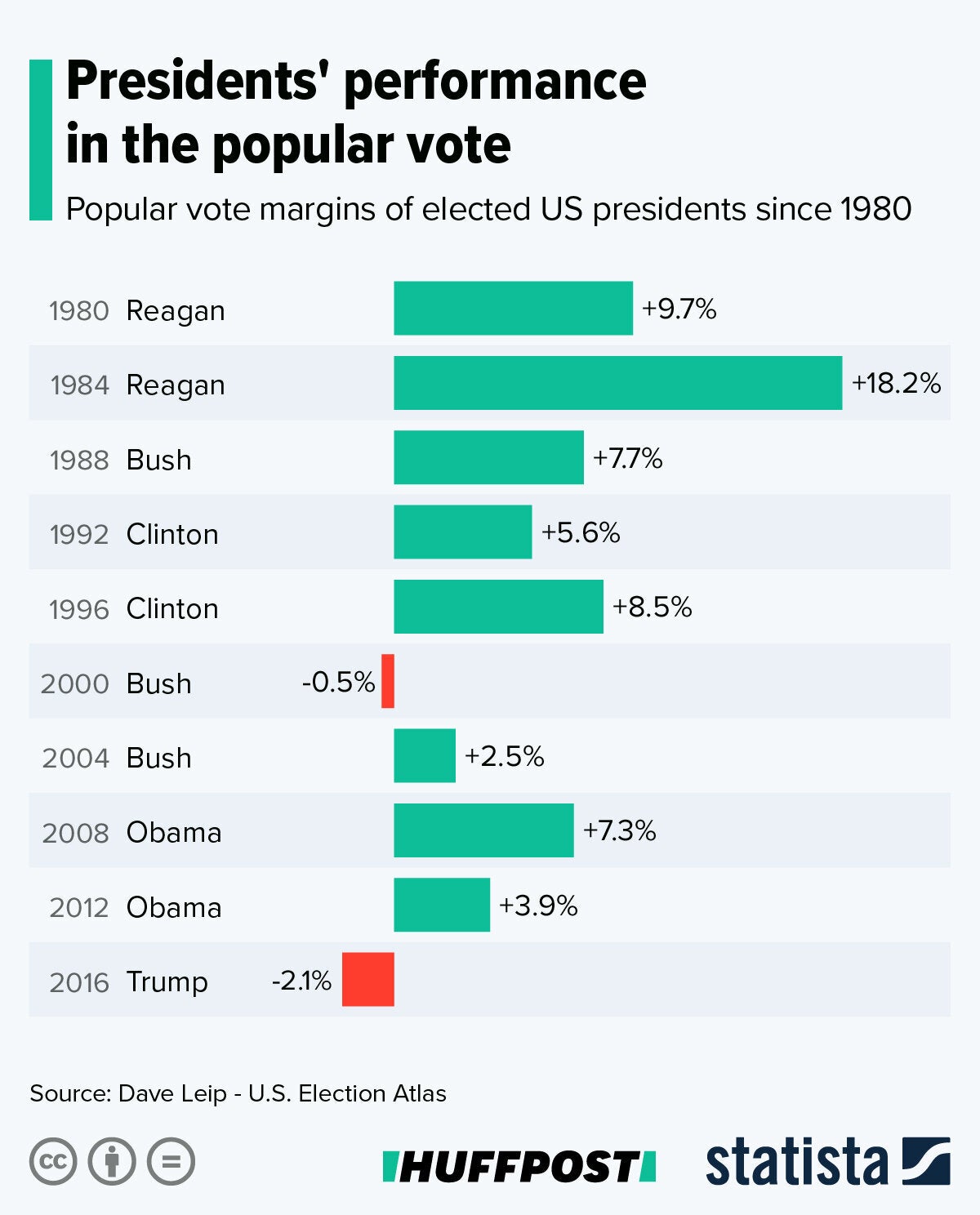
Could the Electoral College go wrong?
Oh yes. “In a super-close election that’s when you get into trouble,” says Prof Anderson.
“And this is a year when all bets are off.”
As we mentioned earlier, although the winner of the election is typically announced hours after election day itself, the electors themselves don’t vote until much later.
This year, the electors meet on December 14 to cast votes and then both chambers of Congress meet on January 6 to count the votes and officially name the winner.
Normally, governors certify the results in their respective states and share the information with Congress.
But some academics have outlined a scenario to Reuters in which the governor and the legislature in a closely contested state submit two different election results.
Battleground states of Pennsylvania, Michigan, Wisconsin and North Carolina all have Democratic governors and Republican-controlled legislatures.
According to legal experts, it is unclear in this scenario whether Congress should accept the governor’s electoral slate or not count the state’s electoral votes at all.
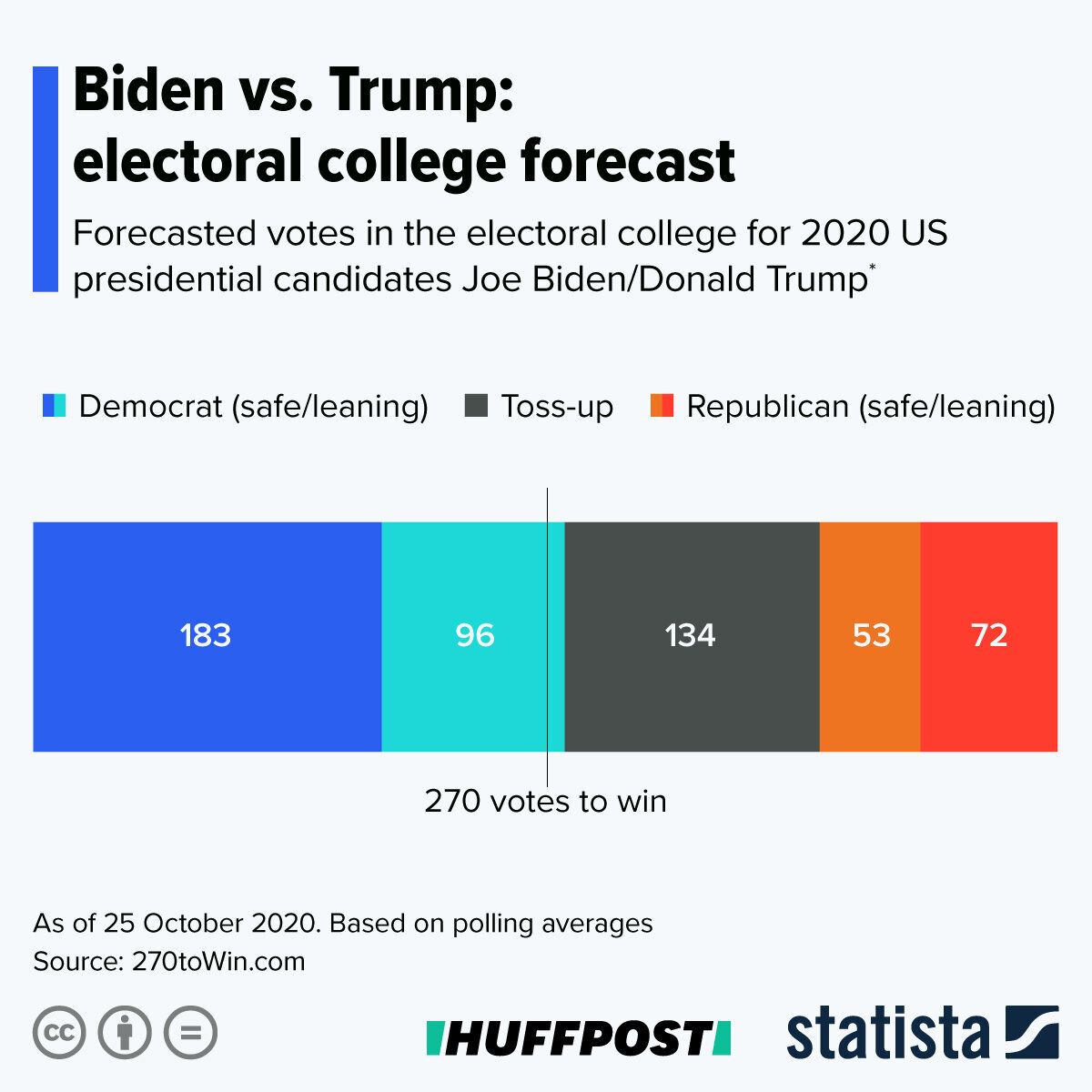
While most experts view the scenario as unlikely, there is historical precedent.
The Republican-controlled Florida legislature considered submitting its own electors in 2000 before the Supreme Court ended the contest between Bush and Gore. In 1876, three states appointed “duelling electors,” prompting Congress to pass the Electoral Count Act (ECA) in 1887.
Under the act, each chamber of Congress would separately decide which slate of “duelling electors” to accept. As of now, Republicans hold the Senate while Democrats control the House of Representatives, but the electoral count is conducted by the new Congress, which will be sworn in on January 3.
If the two chambers disagree, it’s not entirely clear what would happen.
Infographics supplied by Statista.
